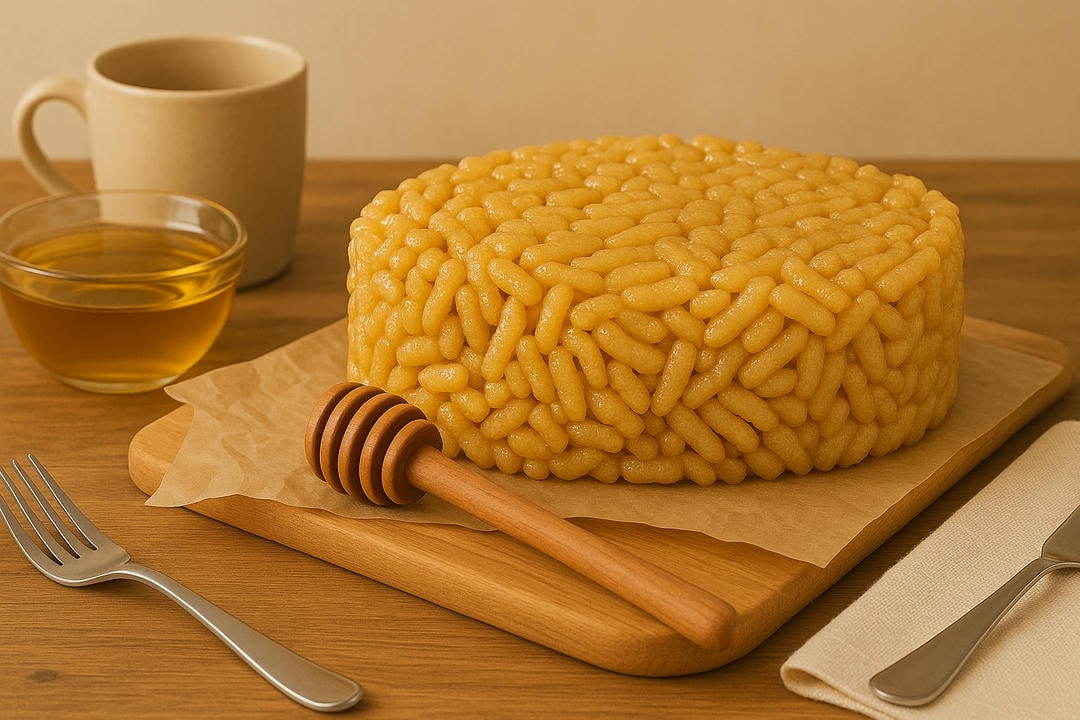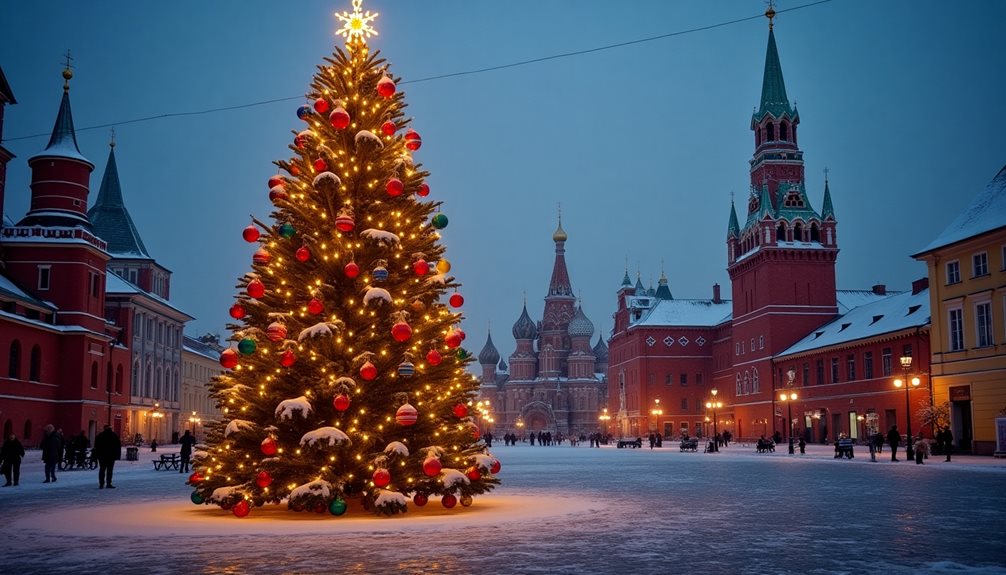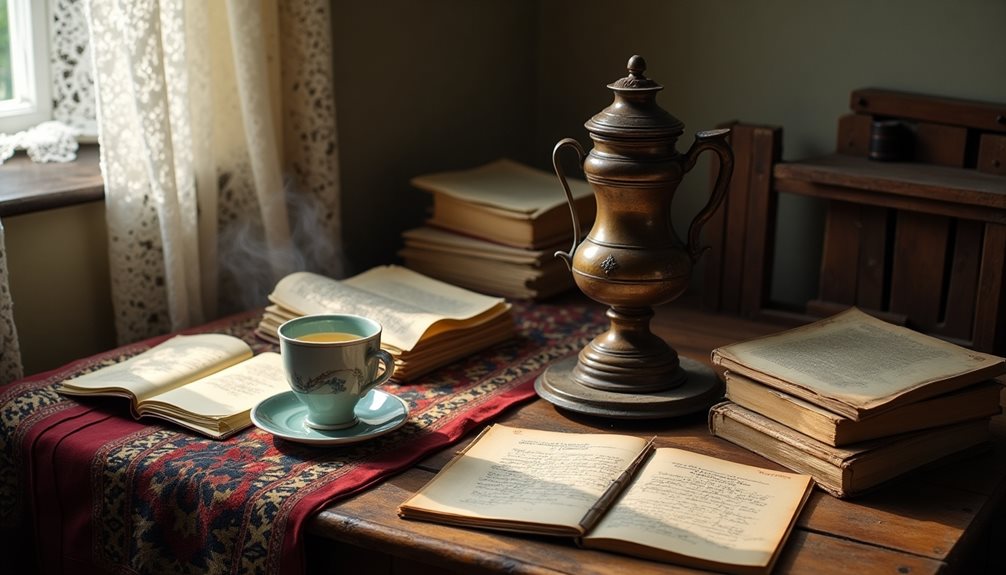Ever thought about exploring the UNESCO-listed Historic and Architectural Complex of the Kazan Kremlin? Here’s your chance to unearth the layers of history and culture etched into the very fabric of this magnificent fortress. From its powerful Volga Bulgarian style to the Russian Orthodox architecture of the Annunciation Cathedral and the Tatar influenced Kul Sharif Mosque, it’s a melting pot of cultural intersections. But wait, there’s more to this complex than meets the eye. Curious about what lies beneath the surface?
The Historical Significance of Kazan Kremlin

Countless tales are woven into the very fabric of the Kazan Kremlin, a testament to its historical significance.
As you tread its ancient grounds, you’re retracing the steps of many who’ve shaped the course of history. This isn’t just a monument; it’s a living narrative, a testament to the human spirit’s desire for freedom.
Imagine the pitched battles, the political intrigues, the cultural exchanges that took place within these walls. You can feel the echoes of the past resonating, from the early days of the Golden Horde to the present day.
Each layer of its history peels back to reveal another, giving you a sense of the depth and complexity of the human journey.
The Kremlin, a UNESCO World Heritage site, has been a witness to the ebb and flow of empires, the rise and fall of leaders, and the struggles and triumphs of its people.
It stands as a beacon of resilience and perseverance, embodying the indomitable will of those who sought to carve out their own destiny.
In exploring the Kazan Kremlin, you’re not just observing history; you’re actively engaging with it, embracing the spirit of freedom that it represents.Architectural Styles Within the Kremlin
As you wander through the Kazan Kremlin, you’ll be struck by the diversity of architectural styles it presents.
You’re not just walking through a historical site; you’re strolling through a living, breathing art gallery. Here, East meets West in a breathtaking fusion that’s sure to spark your wanderlust.
The fortress walls and towers, built in the 16th century, boast a powerful Volga Bulgarian style. You can’t miss the strong, fortress-like appearance, which is a reminder of a time when these walls withstood countless attacks.
Then, there’s the Annunciation Cathedral, the epitome of Russian Orthodox architecture.
Its onion domes and intricate details are a testament to the grandeur of Moscow’s architectural influence.
But don’t miss the Kul Sharif Mosque, a symbol of Tatar culture and Islamic architecture.
Its sleek minarets and turquoise dome are a sight to behold, standing out against the Kremlin’s skyline.
And finally, you’ll find the Spasskaya Tower, a blend of Pseudo-Gothic and Oriental styles.
Its imposing structure and intricate detailing beautifully capture the unique aesthetic of the Kazan Kremlin.
That’s the beauty of the Kazan Kremlin: it’s not just a fortress, but a melting pot of cultures, histories, and architectural styles.
Key Monuments to Visit
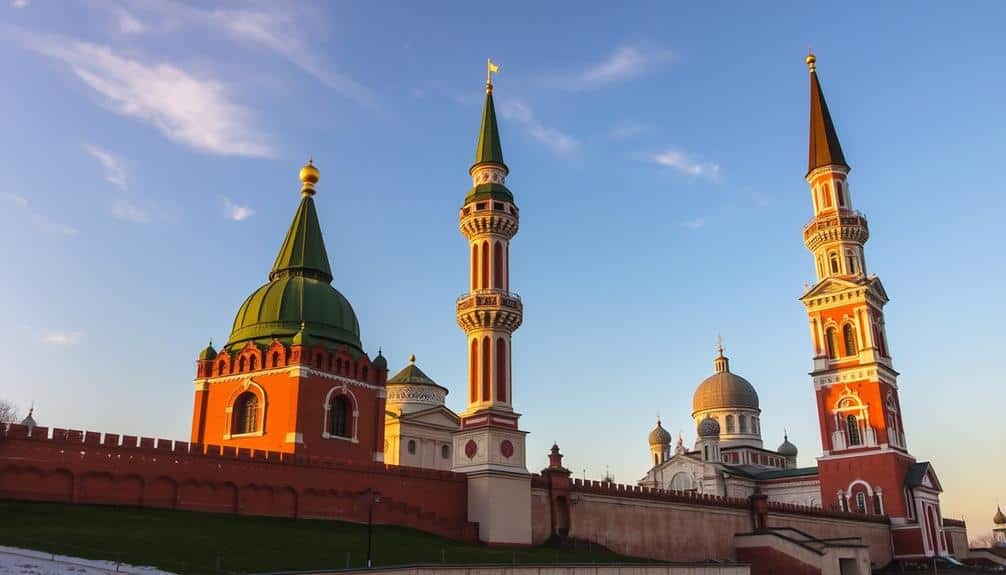
When you visit the Kazan Kremlin, there are several key monuments you can’t afford to miss. With a rich history and beautiful architecture, these monuments embody the spirit of freedom.
First on your list should be the Annunciation Cathedral. This stunning, white-stone edifice with its golden domes is a beacon of faith and freedom.
It’s not just a church, but a monument to the strong will of the people who built it centuries ago.
Next, you can’t miss the Soyembika Tower, the Kremlin’s most recognizable landmark. It’s the perfect spot to capture memories of your journey.
Feel the freedom as you gaze out from the tower over the breathtaking landscape of the city.
Another must-see is the Presidential Palace. Although you can’t enter, its grandeur from the outside is enough to inspire.
It’s a symbol of power, yet it also resonates with the spirit of liberty.
Lastly, take a stroll to the Monument of Musa Jalil. This statue pays tribute to a national hero, offering a poignant reminder of the struggle for freedom.
These monuments aren’t just places to visit, they’re experiences that’ll set your spirit free.
Cultural Influence on Kremlin Design
Despite its firm roots in the past, the Kazan Kremlin isn’t a relic.
Instead, it’s a vibrant manifestation of the myriad of cultures that have influenced its design over the centuries. Your eyes will be delighted by an eclectic mix of architectural styles reflecting the diverse ethnic and religious influences that have left their mark on the Kremlin.
You’ll notice the prominent influence of both Islamic and Orthodox Christian cultures, embodying a unique blend of East meets West. The Islamic elements are evident in the stunning Qolşärif Mosque, the heart of the Kremlin. Its turquoise domes and minarets reach towards the sky, a testament to the Tatar heritage.
The Annunciation Cathedral, on the other hand, is a symbol of Orthodox Christianity, with its golden domes gleaming in the sun, embodying the Russian influence.
This cultural crossroads isn’t limited to architecture. It’s also reflected in the Kremlin’s history, local traditions, and the daily life of its inhabitants.
As you explore the Kazan Kremlin, you aren’t just witnessing a historical monument, you’re experiencing a living testament to cultural fusion and harmony.
It’s a freedom-loving traveler’s delight.
The UNESCO Recognition Journey
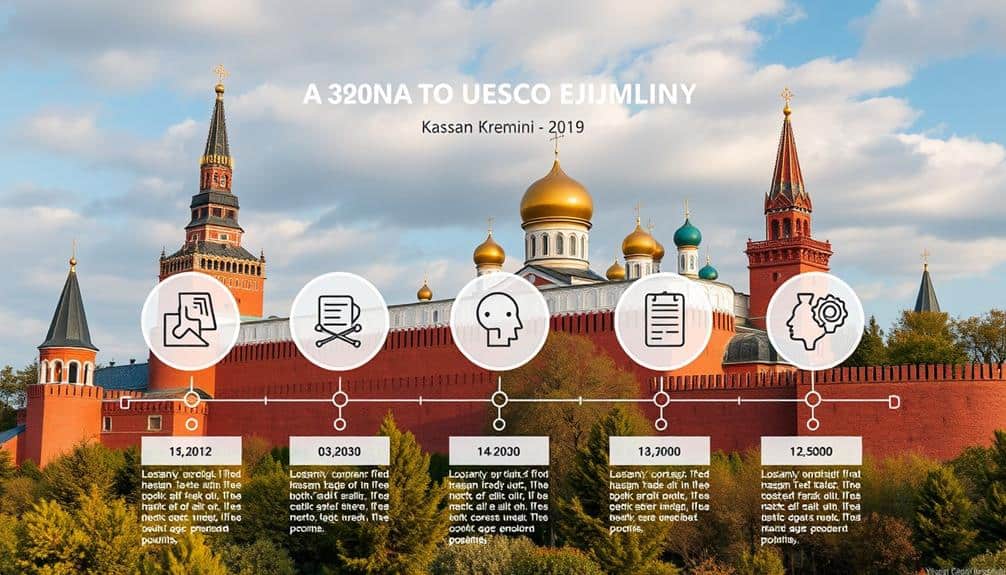
The Kazan Kremlin’s journey to UNESCO recognition is a tale worth exploring. This process wasn’t an overnight success, it required a commitment to preserving the heritage site’s authenticity and integrity.
You see, UNESCO doesn’t hand out this prestigious recognition to just any site. It’s a demanding process that requires demonstrating the site’s outstanding universal value.
In 2000, the Kazan Kremlin made its bid for UNESCO recognition. It was a decision driven by a desire to safeguard the Kremlin’s historical and cultural significance.
The application process was a laborious task, involving extensive documentation and strict evaluation procedures. It was a testament to the spirit of perseverance, a quality that resonates with anyone who values freedom.
After four long years, in 2004, the hard work paid off. The Kazan Kremlin was officially inscribed on the UNESCO World Heritage List.
This recognition is a badge of honor, not just for the Kazan Kremlin, but for the people who tirelessly worked to ensure its legacy. It’s a story of determination that should inspire you to cherish and protect your own cultural heritage.
Unique Features of Kazan Kremlin
Step inside the Kazan Kremlin, and you’ll find yourself immersed in a world of architectural marvels. This stronghold, perched high on a hill overlooking the Volga River, is a testament to the blend of cultures that have shaped Tatarstan’s history. You’re not just witnessing the grandeur of ancient Russian architecture, but also the Islamic influences that have woven their way into the fabric of this city.
As you explore, you’ll see the stunning Qol Sharif mosque, with its blue domes and towering minarets. It’s an astonishing sight, standing in stark contrast to the Orthodox Annunciation Cathedral next to it. This juxtaposition of Islamic and Christian architecture is rare, making the Kazan Kremlin truly unique.
You’ll also find the leaning Söyembikä Tower, a hauntingly beautiful structure said to be cursed. Its tilt heightens the sense of wonder and mystery that pervades the site.
The Kremlin’s ancient walls and towers, some dating back to the 10th century, are a testament to the spirit of resilience and freedom that has defined Kazan’s history. Here, in the heart of Tatarstan, the past meets the present, and you’re free to explore it all.
Planning Your Visit to Kazan Kremlin
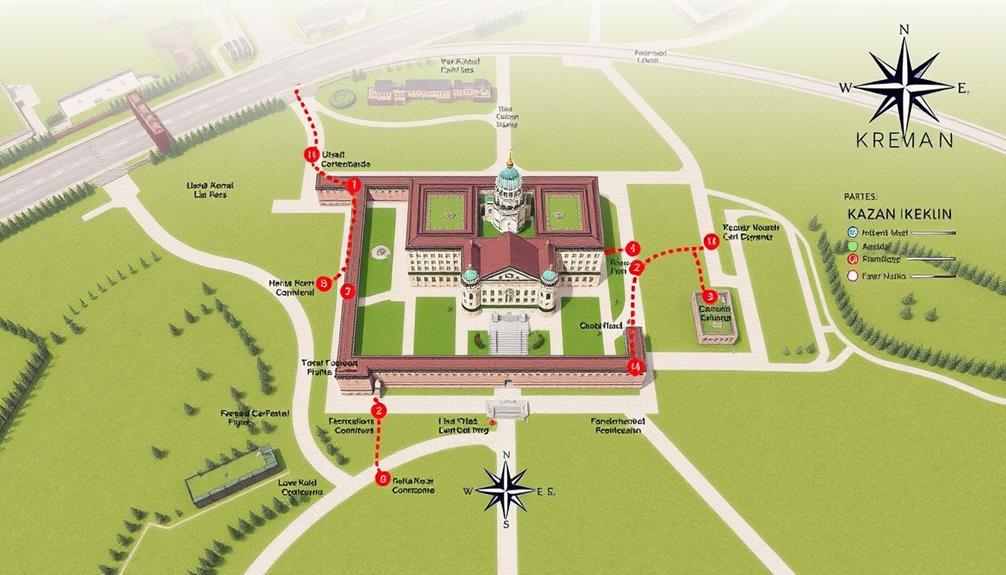
Before embarking on your journey to Kazan Kremlin, it’s crucial to plan your visit meticulously. This isn’t merely a trip; it’s an adventure into the heart of Russia’s history.
Freedom seekers like you’ll revel in the experience.
Start by checking the Kremlin’s opening hours. It’s open daily, but hours can vary, so it’s best to confirm beforehand.
Consider hiring a local guide. They’ll provide a wealth of knowledge and enhance the richness of your visit.
Don’t forget your camera!
The Kazan Kremlin is a feast for the eyes, offering stunning views filled with architectural wonders and historical riches.
Pack comfortable shoes as well.
The site is expansive, and you’ll want to explore every corner.
Think about visiting during off-peak hours to avoid large crowds.
This will allow you to immerse yourself fully in the experience, soaking up the atmosphere without feeling rushed or crowded.
Conclusion
So, you’ve explored the cultural melting pot that is the Kazan Kremlin. You’ve seen firsthand how Russian Orthodox, Volga Bulgarian, and Islamic architectures meld seamlessly in this UNESCO gem. You’ve marveled at the golden domes of the Annunciation Cathedral and the unique pseudo-Gothic Spasskaya Tower. The Kazan Kremlin is truly a testament to Russia’s rich, diverse history. Now that you’ve discovered its wonders, it’s time to plan your next unforgettable journey!


